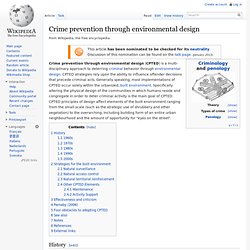

16 recommendations on security technology to take to your K-12 clients. Special report: Can design prevent another Sandy Hook? AEC professionals weigh in on school security. Untitled.
The Safer School Design Initiative – School Designer. As I sit in my office, just 15 miles from the devastating and horrific Amish school shooting site in rural Pennsylvania, I am mindful that there is no such thing as a safe school.

There are however, safer schools. In this issue of The Schooldesigner, we assist in making schools safer with practical advice. Years ago, I had the opportunity to work on the design for renovations and additions to a public elementary school near the Amish schoolhouse where the tragedies occurred. I can't help but wonder, "Did we make that one elementary school safer so that it was not the target of the school shooting?
" Similarly, many of you readers work diligently to make schools safer and, for that, you should be commended. Listed below are the "must do" items to make schools safer. Bath School disaster. The Bath School disaster refers to the series of violent attacks perpetrated by Andrew Kehoe on May 18, 1927, in Bath Township, Michigan, that killed 38 elementary school children and six adults in total, and injured at least 58 other people. [Note 1] Kehoe first killed his wife, fire-bombed his farm and set off a major explosion in the Bath Consolidated School, before committing suicide by detonating a final explosion in his truck. It is the deadliest mass murder in a school in United States history.[1][2] Kehoe's wife was ill with tuberculosis, he had stopped making mortgage payments, and he was under pressure for foreclosure.
Some time between May 16 and the morning of May 18, 1927, Kehoe murdered his wife. Then on the morning of May 18 at about 8:45 a.m., he set off various incendiary devices on his homestead that caused the house and other farm buildings to be destroyed by the explosives' blast and the subsequent fires. Background[edit] Bath Township[edit] Andrew Kehoe[edit] A. M.W. O. How Cellphones Are Changing School Emergency Plans.
In the past, schools and cellphones didn't mix. Teachers saw them as a distraction, and many schools banned their use in the classroom. But in the wake of school shootings over the past 13 years, school districts are beginning to change their policies. Since the 1999 killings at Columbine High School in Colorado, school districts and law enforcement authorities have worked together on strategies to respond to violence in schools. Plans include how to protect students inside buildings, evacuate them and notify parents. Students and teachers practice lockdown drills, steps to secure the school so that no one can enter or exit. And technology is a big part of more recent plans, now that cellphone use among kids has grown.
After the Chardon High School shooting earlier this year, administrators at the small-town school in Ohio reported that students used their phones call 911 and to let their parents know they were safe. For instance, a mass text could direct students in case of a crisis. What really makes schools safer? The school in Sandy Hook did a lot right, but the shooting happened despite their effortsChildren have to feel safe coming forward with information they may haveSuch violent incidents occur so quickly that a lot of damage is done before police can respondSince the Columbine shooting, many new schools are designed to make attacks more difficult (CNN) -- Sandy Hook Elementary School probably did everything right.

Its staff worked every day to create a climate of kindness over bullying. They had lockdown drills that trained everyone to stay low and quiet in the event of an emergency. A security system introduced this year required visitors to ring a bell, sign-in and perhaps produce a photo ID. After 9:30 a.m., the doors were locked. Edl622-when-seconds-count. Crime prevention through environmental design. Crime prevention through environmental design (CPTED) is a multi-disciplinary approach to deterring criminal behavior through environmental design.

CPTED strategies rely upon the ability to influence offender decisions that precede criminal acts. Generally speaking, most implementations of CPTED occur solely within the urbanized, built environment. Specifically altering the physical design of the communities in which humans reside and congregate in order to deter criminal activity is the main goal of CPTED. CPTED principles of design affect elements of the built environment ranging from the small-scale (such as the strategic use of shrubbery and other vegetation) to the overarching, including building form of an entire urban neighbourhood and the amount of opportunity for "eyes on the street".
History[edit] 1960s[edit] Schlomo Angel was an early pioneer of CPTED and studied under noted planner Christopher Alexander. 1970s[edit] 1980s[edit] The "broken windows" theory, put forth by James Q. List of school shootings in the United States.